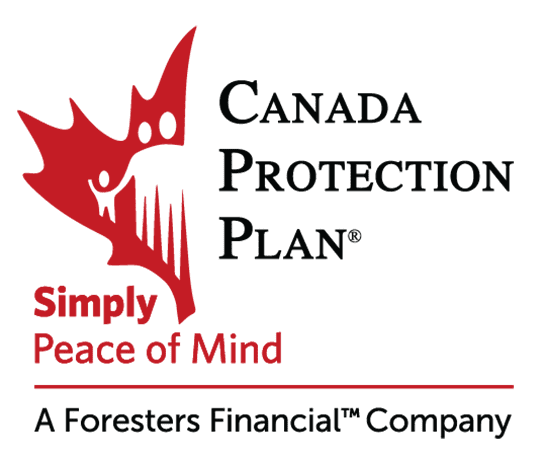
October is Breast Cancer Awareness Month; this month is dedicated to restoring hope to those living with the disease or who have survived it. Through awareness initiatives, research, and fundraising, we can continue to support our grandmothers, mothers, sisters, and daughters in their fight against breast cancer.
Breast cancer is the most common type of cancer to affect Canadian women.1 Research shows that 1 in 8 women will be diagnosed with breast cancer in their lifetime.1 Breast cancer tends to occur in women between the ages of 50 and 69, but it can also occur in men (though less common).2
Fortunately, as a result of research and advancements in technology, the outcome of the disease has substantially improved. Since the 1980s the breast cancer mortality rate has been decreasing,3 with 85% of women and 75% of men surviving more than 5 years after their breast cancer diagnosis.3
What is Breast Cancer?
Abnormal growth and behaviour of cells in the breast can cause non-cancerous conditions such as hyperplasia, cysts and tumors. However, these cellular changes can also cause breast cancer.
Signs and Symptoms of Breast Cancer
In the early stages of the disease, women may experience no obvious signs or symptoms. However, if they do, then typically these are the symptoms they will experience:4
- a lump in the armpit
- changes in the shape or size of the breast
- changes to the nipple, such as an inverted nipple
- discharge or blood that comes out of the nipple without squeezing it
In later stages of the disease, women may experience the following symptoms:4
- bone pain
- weight loss
- nausea
- loss of appetite
- jaundice
- shortness of breath
- cough
- headache
- double vision
- muscle weakness
How to Prevent Breast Cancer
Regular breast cancer screenings
Breast cancer screenings occur when a woman shows no signs or symptoms of the disease.5 A mammograph is a low-dose x-ray used to see if cancer is developing in the body.5 Women should begin getting mammograms at age 40, unless otherwise specified by their physician.5 When breast cancer is discovered in a woman’s body and treated early, treatment has a better chance of being successful.5
Self-exams at home
While regular screenings are important to detect breast cancer before it can be felt, it is recommended to perform a self-exam at home to check for lumps at least once a month.6 While 8 out of 10 lumps are non-cancerous, this allows women to communicate any breast abnormalities they may feel to their health care physician.6 Here are steps for completing a self-exam at home.
Risk Factors for Breast Cancer
There are several risk factors for breast cancer, each with varying degrees of research to support the link to the disease. The most common and highly researched breast cancer risk factors include:
History of breast cancer
Women who previously had breast cancer, are at an increased risk of developing the disease again. The risk of recurrence of the disease depends on several factors.
Family history of breast cancer
Having blood relatives who have been diagnosed with breast cancer can increase the chance that a woman will be diagnosed with the disease in her lifetime.2 For women who have a first-degree relative (mother, sister or daughter) with breast cancer, it approximately doubles their risk.2
BRCA gene mutations
Women who have inherited the BRCA1 (breast cancer gene 1) or BRCA2 (breast cancer gene 2) gene mutations from their mother or father are at an increased risk of breast cancer.2 These genes are supposed to control cell growth in the breast, however if they do not function adequately then they may cause breast cancer.2
While these gene mutations are rare, many women choose to get tested since those that have either the BRCA1 or BRCA2, have an 85% change of developing breast cancer.2
Treatment Options for Breast Cancer
For those living with breast cancer there are a number of cancer treatment options available. An oncologist will decide which are most appropriate depending on the stage of the disease, if you have reached menopause, and other factors.
These treatment options include chemotherapy, radiation therapy, surgery, hormonal therapy, along with others. See a full list here. If the breast is removed as a result of the cancer, some women opt to have breast reconstruction or prosthesis surgery.
Life Insurance and Breast Cancer
Life insurance can protect your loved ones in case you pass away as a result of a breast cancer diagnosis.
A common misconception is that those who have previously had or have breast cancer cannot qualify for affordable life insurance coverage. However, depending on the life insurance provider, those who have been diagnosed with breast cancer or are survivors of the disease, may be able to qualify for affordable life insurance.
For the hard to insure, no-medical life insurance can be a promising option since it doesn’t involve medical test or exams. No needles or drawing of fluids is required to apply or qualify for coverage. The application process is straightforward and consists of answering some health-related questions. Unlike traditional life insurance, your policy may be issued in just a few days.
Critical Illness Insurance
When a person has critical illness insurance in place prior to being diagnosed or treated for breast cancer it can provide a living benefit to use during a difficult time. Whether you need it as income replacement when you cannot work or to hire a support worker, you can use the benefit to cover any costs related or unrelated to the disease. Consider how this financial protection can help yourself or loved ones during a difficult time.
Ways to Honour Breast Cancer Awareness Month
Volunteer
There are many exciting opportunities such as events, administrative support, or fundraising support, that you can involve yourself in to help the Breast Cancer Society of Canada. Here is a list of volunteer opportunities.
Fundraise
The Breast Cancer Society of Canada has several fundraising initiatives that you can take part in such as the One Billion Steps Challenge, Dress for the Cause, and more. For a full list of events click here.
Leave a Legacy
Consider designating the Breast Cancer Society of Canada as your beneficiary of your life insurance policy. This allows you to continue to support a cause that is close to your heart, by funding the mission of the organization.
Canada Protection Plan offers No Medical and Simplified Issue Life Insurance, a life insurance option that can give those who currently have or previously had breast cancer the opportunity to get the coverage they need to financially protect their loved ones.
Find out what you can be covered for. Speak with your advisor or contact Canada Protection Plan for a no-obligation life insurance quote.


SOURCES:
- 1 https://www.cancer.ca/en/cancer-information/cancer-type/breast/statistics/?region=on
- 2 https://www.cancer.ca/en/cancer-information/cancer-type/breast/risks/?region=on#personal
- 3 https://bcsc.ca/about-us/#:~:text=The%20Breast%20Cancer%20Society%20of%20Canada%2C%20(BCSC)%20is%20a,and%20prevention%20of%20breast%20cancer
- 4 https://www.cancer.ca/en/cancer-information/cancer-type/breast/signs-and-symptoms/?region=on
- 5 https://www.cancer.ca/en/cancer-information/cancer-type/breast/screening/?region=on
- 6 https://www.nationalbreastcancer.org/breast-self-exam







